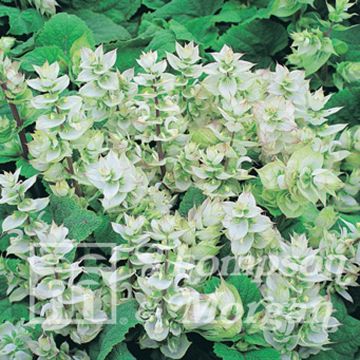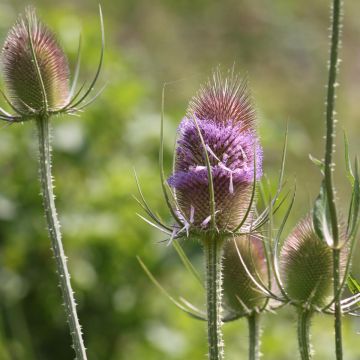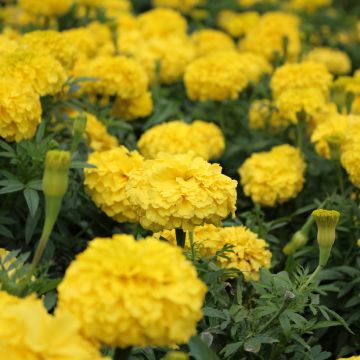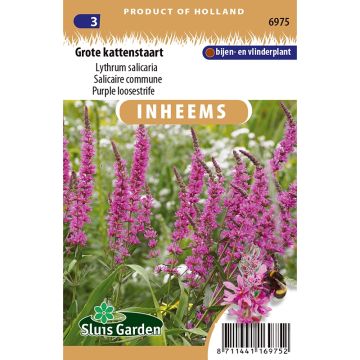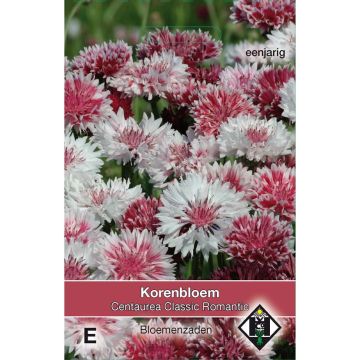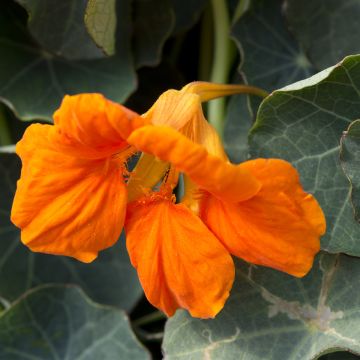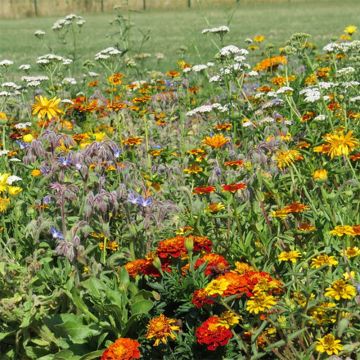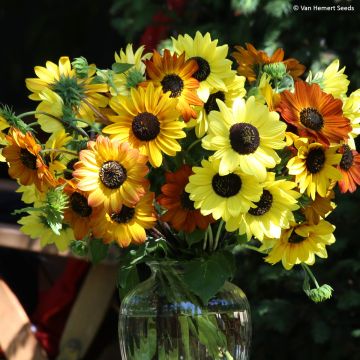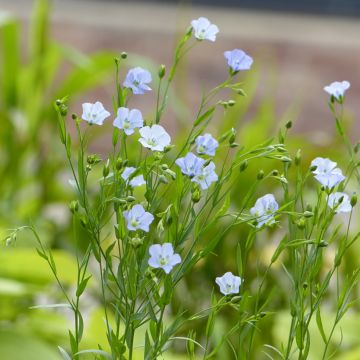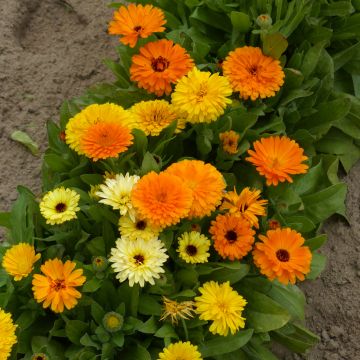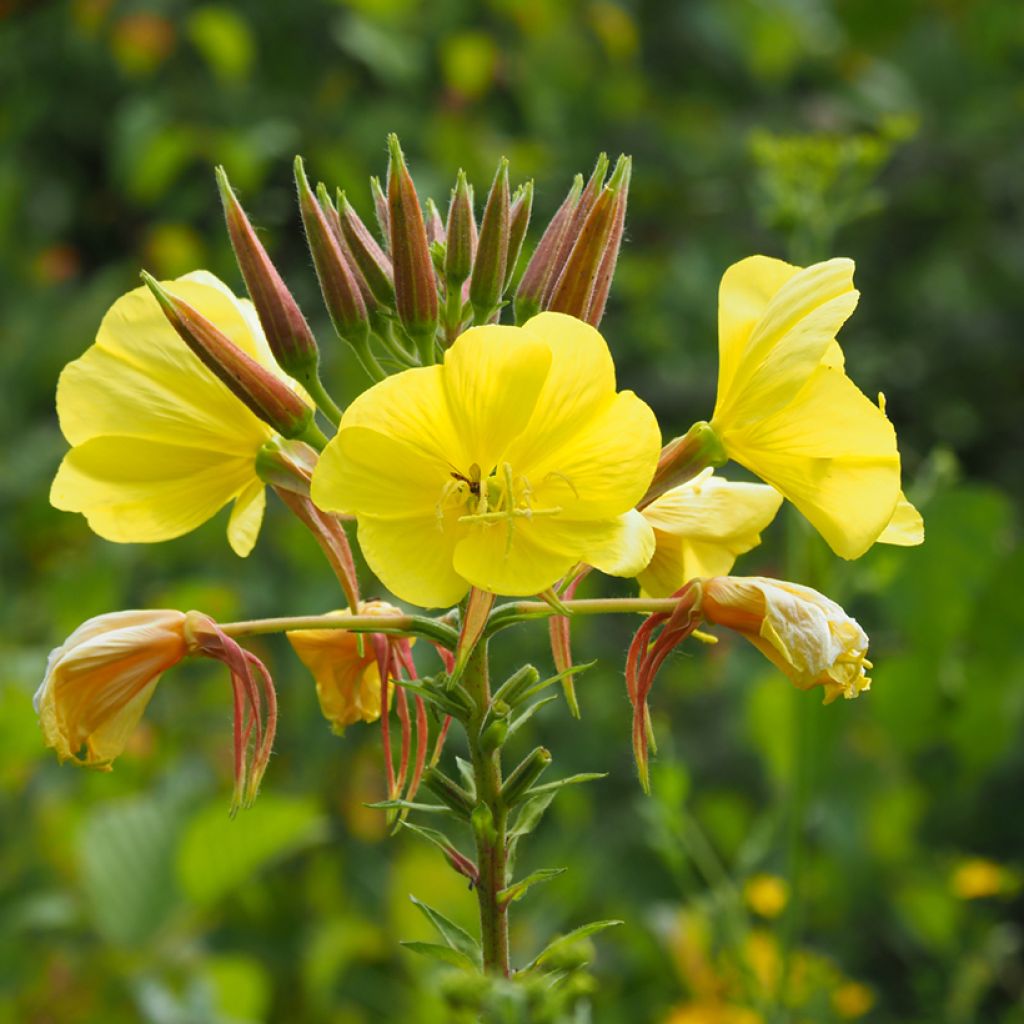

Oenothera biennis
Oenothera biennis
Oenothera biennis
Evening Primrose
This item cannot be shipped to the selected country
Dispatch by letter from €3.90
More information
Schedule delivery date,
and select date in basket
This plant carries a 6 months recovery warranty
More information
We guarantee the quality of our plants for a full growing cycle, and will replace at our expense any plant that fails to recover under normal climatic and planting conditions.
Seed-only orders are dispatched by sealed envelope. The delivery charge for seed-only orders is €3.90.
Does this plant fit my garden?
Set up your Plantfit profile →
Description
Oenothera biennis, the biennial Evening Primrose, also known as Fever Plant, Field Primrose or German Rampion, is a tall biennial plant introduced from North America that has become familiar in our landscapes. It is easily spotted in summer during evening walks, in uncultivated areas where its flowers shine with an almost fluorescent yellow colour and a pleasant scent. The biennial Evening Primrose is cultivated in vegetable gardens for its fleshy root which is edible once cooked, or in ornamental gardens where it generously self-seeds if left to nature. Sow directly in the ground in spring or late summer. Grow in sunny, well-prepared ordinary soil.
Oenothera biennis is a biennial herbaceous plant belonging to the Onagraceae family. It is native to central and eastern North America and naturalised worldwide. It is cultivated in gardens for its ornamental qualities, as a vegetable, or for its medicinal and culinary properties. This plant provides the precious evening primrose oil extracted from its seeds. It is used in cosmetics and herbal medicine.
The biennial Evening Primrose forms a large clump of angular, upright, and ramified stems over the course of two years, measuring between 70 cm (28in) and 1.30 m (4ft) in height when flowering, depending on the richness and depth of the soil. In the first year, it only forms a basal rosette. Its leaves are quite long, light green, marked with an almost white vein. The lamina is entire, lanceolate in shape, flexible, and covered with fine hairs. The flowering period extends from June to September in the second year. The cup-shaped flowers consist of 8 lemon yellow to sulfur yellow petals. They open in the late afternoon and wither at sunrise. New buds bloom each evening. Pollination is carried out by nocturnal pollinators. The fruit of this evening primrose measures 2 to 3 cm (1in) in length and contains seeds that ripen when the plant reaches the end of its life and dries up. If the fruits are not destroyed, the evening primrose self-seeds abundantly. Note that the seeds are sought after by certain birds such as tits, finches, accentors, and goldfinches...
The biennial Evening Primrose provides us with the most beautiful spectacle when its flowers open for the night. Their unfolding is visible to the naked eye. In ornamental gardens, it can be sown in a flowery meadow, alongside viper's bugloss, field scabious, and mulleins, for example. The Evening Primrose, also known as 'gardener's ham,' is sometimes cultivated as a vegetable in the fertile soil of the vegetable garden, as its large taproots reportedly have the colour of ham and a slightly sweet and peppery flavour with hints of smoked meat. The roots should be harvested at the end of the first year of growth, before the plant exhausts its reserves in flowering. The leaves that form the basal rosette in the first year of growth can also be consumed, added to soups and stews. The older leaves can be eaten in salads, like frisée lettuce, after being deprived of light. This certainly piques our curiosity and why not pair it with Mertensia maritima, the plant with an oyster-like taste.
Report an error about the product description
Flowering
Foliage
Plant habit
Botanical data
Oenothera
biennis
Onagraceae
Evening Primrose
North America
Other Thompson and Morgan seeds
Planting and care
Sow the biennial Evening Primrose directly in situ in spring or late summer. Sowing in a seed tray is also possible.
Direct sowing: in a well-prepared and refined garden soil, keeping a distance of 40-50 cm (16-20in) between plants. Evening primrose loves sun and well-drained, moist to dry soils. If the goal of cultivation is root harvest, it is preferable to grow the plant in a rich, deep, and moist soil. However, in ornamental gardens, it will thrive in a wide range of soils, even fairly poor and dry ones.
Sowing in a seed tray or pot:
Sow from February to May at room temperature between 18 and 20°C (64.4 and 68°F) on the surface of a good seed compost that you keep moist but not excessively. Apply a light covering of vermiculite, but do not completely cover the seeds as they need some light to germinate. You will see your young shoots appearing between 14 and 21 days. When the seedlings are strong enough to handle, transplant them to a cooler place for two weeks to gradually acclimatize them.
Plant in open ground once the risk of frost has completely passed, making sure to space your plants at least 40 cm (16in) apart.
Sowing period
Intended location
This item has not been reviewed yet - be the first to leave a review about it.
Flower seeds
Haven't found what you were looking for?
Hardiness is the lowest winter temperature a plant can endure without suffering serious damage or even dying. However, hardiness is affected by location (a sheltered area, such as a patio), protection (winter cover) and soil type (hardiness is improved by well-drained soil).

Photo Sharing Terms & Conditions
In order to encourage gardeners to interact and share their experiences, Promesse de fleurs offers various media enabling content to be uploaded onto its Site - in particular via the ‘Photo sharing’ module.
The User agrees to refrain from:
- Posting any content that is illegal, prejudicial, insulting, racist, inciteful to hatred, revisionist, contrary to public decency, that infringes on privacy or on the privacy rights of third parties, in particular the publicity rights of persons and goods, intellectual property rights, or the right to privacy.
- Submitting content on behalf of a third party;
- Impersonate the identity of a third party and/or publish any personal information about a third party;
In general, the User undertakes to refrain from any unethical behaviour.
All Content (in particular text, comments, files, images, photos, videos, creative works, etc.), which may be subject to property or intellectual property rights, image or other private rights, shall remain the property of the User, subject to the limited rights granted by the terms of the licence granted by Promesse de fleurs as stated below. Users are at liberty to publish or not to publish such Content on the Site, notably via the ‘Photo Sharing’ facility, and accept that this Content shall be made public and freely accessible, notably on the Internet.
Users further acknowledge, undertake to have ,and guarantee that they hold all necessary rights and permissions to publish such material on the Site, in particular with regard to the legislation in force pertaining to any privacy, property, intellectual property, image, or contractual rights, or rights of any other nature. By publishing such Content on the Site, Users acknowledge accepting full liability as publishers of the Content within the meaning of the law, and grant Promesse de fleurs, free of charge, an inclusive, worldwide licence for the said Content for the entire duration of its publication, including all reproduction, representation, up/downloading, displaying, performing, transmission, and storage rights.
Users also grant permission for their name to be linked to the Content and accept that this link may not always be made available.
By engaging in posting material, Users consent to their Content becoming automatically accessible on the Internet, in particular on other sites and/or blogs and/or web pages of the Promesse de fleurs site, including in particular social pages and the Promesse de fleurs catalogue.
Users may secure the removal of entrusted content free of charge by issuing a simple request via our contact form.
The flowering period indicated on our website applies to countries and regions located in USDA zone 8 (France, the United Kingdom, Ireland, the Netherlands, etc.)
It will vary according to where you live:
- In zones 9 to 10 (Italy, Spain, Greece, etc.), flowering will occur about 2 to 4 weeks earlier.
- In zones 6 to 7 (Germany, Poland, Slovenia, and lower mountainous regions), flowering will be delayed by 2 to 3 weeks.
- In zone 5 (Central Europe, Scandinavia), blooming will be delayed by 3 to 5 weeks.
In temperate climates, pruning of spring-flowering shrubs (forsythia, spireas, etc.) should be done just after flowering.
Pruning of summer-flowering shrubs (Indian Lilac, Perovskia, etc.) can be done in winter or spring.
In cold regions as well as with frost-sensitive plants, avoid pruning too early when severe frosts may still occur.
The planting period indicated on our website applies to countries and regions located in USDA zone 8 (France, United Kingdom, Ireland, Netherlands).
It will vary according to where you live:
- In Mediterranean zones (Marseille, Madrid, Milan, etc.), autumn and winter are the best planting periods.
- In continental zones (Strasbourg, Munich, Vienna, etc.), delay planting by 2 to 3 weeks in spring and bring it forward by 2 to 4 weeks in autumn.
- In mountainous regions (the Alps, Pyrenees, Carpathians, etc.), it is best to plant in late spring (May-June) or late summer (August-September).
The harvesting period indicated on our website applies to countries and regions in USDA zone 8 (France, England, Ireland, the Netherlands).
In colder areas (Scandinavia, Poland, Austria...) fruit and vegetable harvests are likely to be delayed by 3-4 weeks.
In warmer areas (Italy, Spain, Greece, etc.), harvesting will probably take place earlier, depending on weather conditions.
The sowing periods indicated on our website apply to countries and regions within USDA Zone 8 (France, UK, Ireland, Netherlands).
In colder areas (Scandinavia, Poland, Austria...), delay any outdoor sowing by 3-4 weeks, or sow under glass.
In warmer climes (Italy, Spain, Greece, etc.), bring outdoor sowing forward by a few weeks.

































